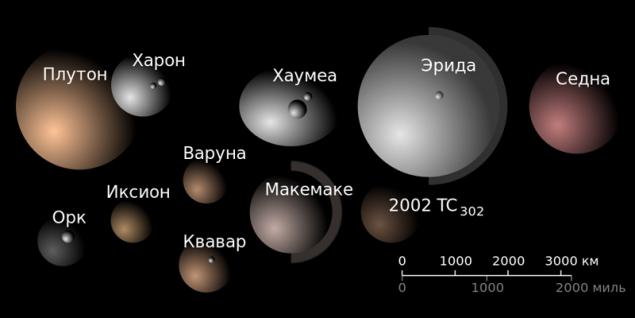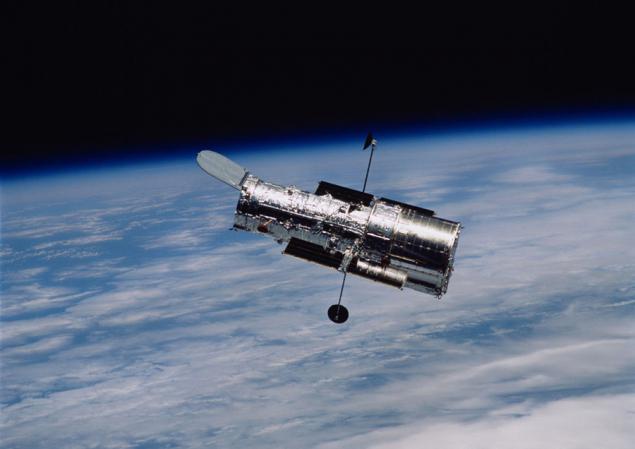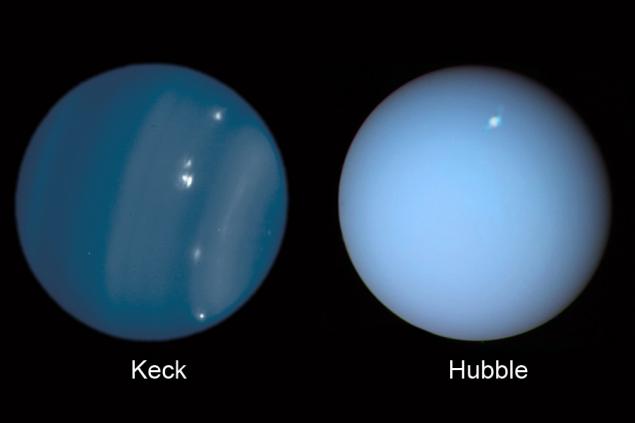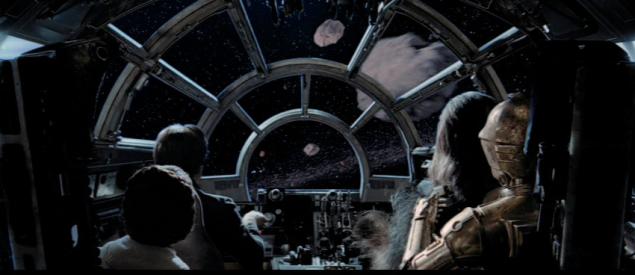Facts about the space in which it is difficult to believe
 Bashny.Net
Bashny.Net
April 1 made all cheat or make fun, but I'll go against tradition. Even in this day, I can not afford deception readers. Therefore, talk about the real facts that caused my surprise. Of course, for someone these facts will not be news, but I hope that something will interest everyone. And I hope that many, like me, and contrary to the precepts of Sherlock Holmes, pulling in your brain attic is not only the right, but just interesting. I would be glad if this April Fool's collection will make someone get deeper into the sources and double-check my statements.
The temperature in space, orbiting the Earth is + 4 ° C h4>
On Venus is sometimes leaden snow h4>
In our solar system planets ... 13 or more h4>
Telescope Hubble - not the most powerful h4>
Bears in Russia there are 19 times more likely than the asteroids in the main asteroid belt h4>
The temperature in space, orbiting the Earth is + 4 ° C h4>

To be precise, it is not in Earth orbit, and at a distance from the sun equal to the distance of the orbit of the Earth. And for a blackbody, ie such that fully absorb the sun's rays do not reflect back.
It is believed that the temperature in the space tends to absolute zero. Firstly, it is not so, because the whole known universe is heated to 3 K cosmic background radiation. Secondly, the stars near the temperature rises. And we live fairly close to the sun. Strong thermal protection suits and need spaceships because they are part of the Earth's shadow, and our star can not warm them up to the specified + 4 ° C. In the shadow of the temperature can drop to -160 ° C, for example at night on the moon. It's cold, but still far from absolute zero.
Here, for example, the testimony of the satellite onboard thermometer TechEdSat , which rotated in low Earth orbit:

It is influenced by the Earth's atmosphere also, but overall chart shows not the terrible conditions that are usually present in space.
On Venus is sometimes leaden snow h4>

This is probably the most striking fact about the cosmos, which I found not so long ago. Conditions on Venus is so different from anything that we could imagine that veneriane calm could fly into hell on earth to rest in a mild climate and comfortable conditions. Therefore, no matter how sound weird phrase "lead snow" for Venus - is a reality.
Thanks to the American radar probe Magellan first 90, the scientists found on the tops of the mountains some Venusian coating with high reflectivity in the radio. The initial intention was several versions: a consequence of erosion, deposition of iron-containing materials, etc. Later, after several experiments on Earth, came to the conclusion , it is the most natural snow metal consisting of sulfides bismuth and lead. In the gaseous state, they are released into the atmosphere during volcanic eruptions. Then the thermodynamic conditions at an altitude of 2600 m and promote the condensation of precipitation at higher elevations.
In our solar system planets ... 13 or more h4>

When Pluto was demoted from planet, good manners was the knowledge that in the solar system eight planets. However, at the same, introduced a new category of celestial objects - dwarf planets. This "nedoplanety" which have a rounded (or close to it) form draws the satellites are not, but if it can not clear its own orbit from the less massive competitors. Today it is believed that five such planets: Ceres, Pluto, Hanumea, Eris and Makemake. The closest to us - Ceres. A year later, we learn about her much more than now, thanks to the probe Dawn. While only know that it is covered with ice and the two points on the surface it evaporates water at a rate of 6 liters per second. About Pluto also learn in the next year, thanks to the station New Horizons. Generally, as 2014 will be a year in space comets, 2015 promises to be a year of dwarf planets.
The rest are dwarf planets beyond Pluto, and any details about them, we do not learn soon. Just recently found another candidate, though officially it to the list of dwarf planets are not included, as well as its neighbor Sedna. But it is possible that they will find even a few larger dwarfs, so the number of planets in the solar system still will grow.
Telescope Hubble - not the most powerful h4>

Due to the enormous volume of images and spectacular discoveries made by the telescope Hubble, in many there is a representation that the telescope has the highest resolution and is able to see such details which are not seen from Earth. For some time and was, despite the fact that the world can gather large mirror telescopes, a significant distortion in the image makes the atmosphere. Therefore, even a "modest" by earthly standards mirror diameter of 2, 4 meters in space, allows to achieve impressive results.
However, over the years that have passed since the launch of Hubble Astronomy and earth did not stand still, it worked out several technologies that, if not completely get rid of the distorting action of air, that significantly reduce its impact. Today, the most impressive is able to give permission Very Large Telescope of the European Southern Observatory in Chile. In the optical interferometer when working together four major and four auxiliary telescopes can be achieved resolution exceeding the capabilities of Hubble is about fifty times.

For example, if the Hubble gives permission to the moon is about 100 meters per pixel (hello to everyone who thinks he can consider landers Apollo), then the VLT can distinguish details of up to 2 meters. Ie in its resolution of US landers or rovers our would look like 1-2 pixels (but will not watch because of the extremely high cost of working time).
A pair of telescopes Observatory Keck, an interferometer, can exceed the resolution of Hubble tenfold. Even individually, each of the ten-meter telescopes Keck, using the technology of adaptive optics can surpass Hubble Prima twice. For example, a photo of Uranus:

But Hubble out of work to do but the sky is big, and the breadth camera Space Telescope exceeds ground capabilities. For clarity, you can look complicated but informative график.
Bears in Russia there are 19 times more likely than the asteroids in the main asteroid belt h4>

Scientific American popular website приводит, and Computerra translates curious calculations, which show that the journey to the asteroid belt is not as dangerous as it seemed to George Lucas. If all the asteroids larger than 1 meter arranged on a plane equal to the area of the Main asteroid belt it turns out that one has to Kamenyuki approximately 3,200 square kilometers. 100 thousand . Russia bears to be distributed in pieces for every 170 square kilometers of territory. Course and asteroids and bears try to stay closer to sebepodobnyh and defile the pure mathematics its uneven distribution, but for a holiday such trifles can be neglected.
Source: habrahabr.ru/post/217775/
Tags
See also
10 Incredibly Young Grandmothers, in which age is hard to believe
17 incredible coincidences that are very hard to believe!
20 seats, which are more like a story than a reality. It's hard to believe that they - these!
Hard to believe ...
Hard to believe ... (10 photos)
Champion of Russia defiled monument (3 photos)
Information about the space in which it is difficult to believe.
Interesting facts about the cosmos. Part 2
























